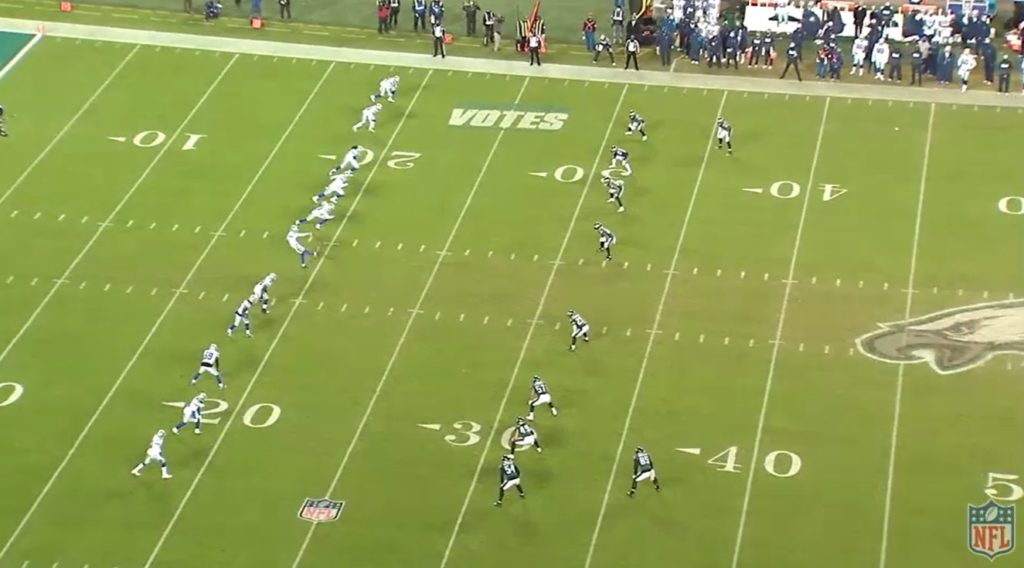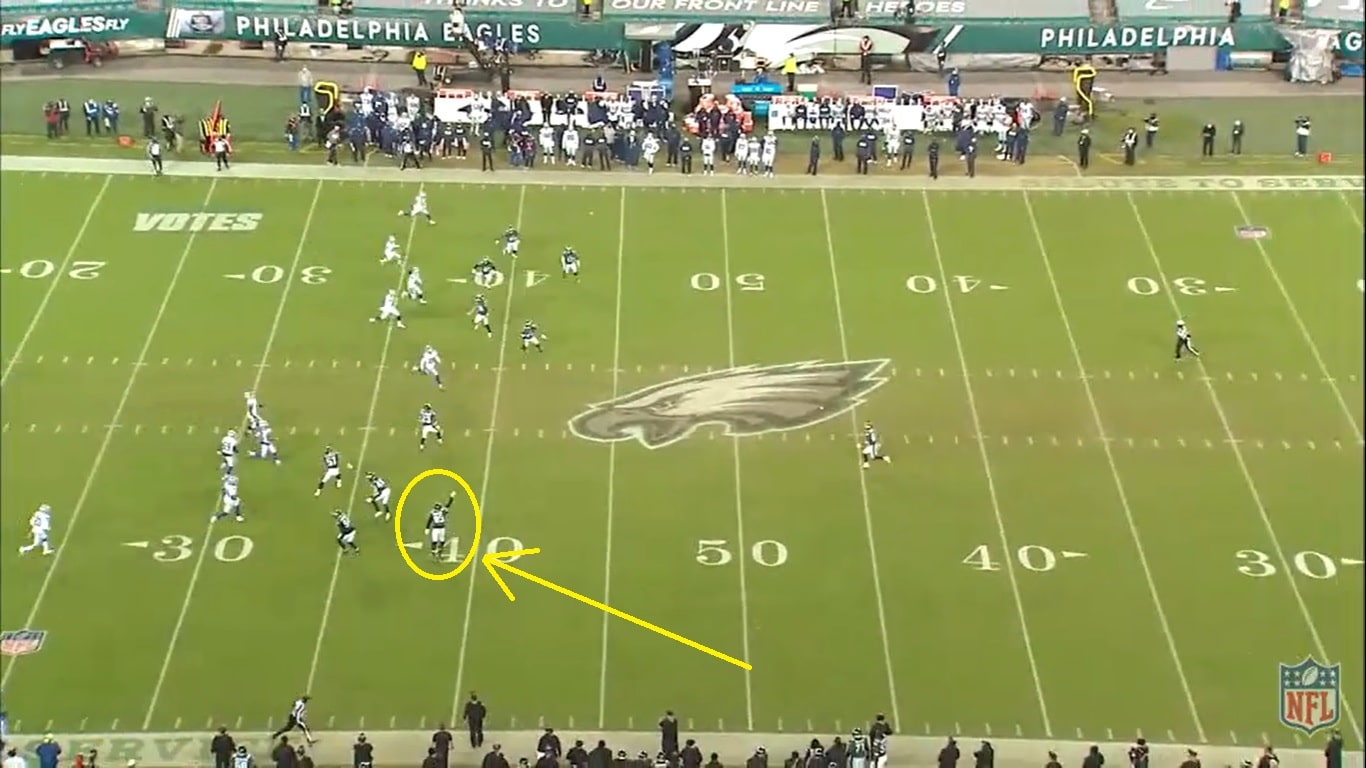Ad Disclosure
Dave Fipp Explains the Goofy Punt at the End of the Dallas Game, Says He’ll Tweak the Coverage Scheme

The Cowboys game seems like it was ages ago, but we never got a good quote about the post-safety punt that Dallas booted after taking an intentional safety.
To jog your memory, the Eagles had just gone up 21-9 after Rodney McLeod’s fumble return touchdown. After forcing a three and out, the Cowboys took the safety to concede the two points and make it a 14-point deficit, at 23-9.
Then this happened, and I’ll give you both angles here of the coaches film, since it shows us more:
The Birds flubbed that play, but got the ball back.
The thinking here, to reiterate, is that the 12 points vs 14 points doesn’t mean anything. It’s still a two-possession game. So Dallas rolls the dice and tries to regain possession with an “onside” punt, which is better than booting the ball out of your own end zone and just giving the Eagles cheap and easy field position.
Monday, special teams coordinator Dave Fipp was asked about the play, and if his unit knew what was going on, to which he replied:
“It’s obviously a unique situation. You (the question asker) refer to it as a kick, but I would refer to it as a punt because it has to be punted. It can’t hit the ground in that situation. But it’s a post-safety punt, is what we call it. Obviously it’s late in the game, where we have our ‘hands’ unit on the field. That situation I would say puts a lot of pressure on the hands team, because you (typically) have 65 yards of field to defend with the ball on the 35, but now the ball is on the 20. Now you’re looking at 80 yards to defend.
There are a lot of rules on the play, but one of them is, that once the ball leaves his foot, it’s like a kick off, so it’s no longer like a punt. I say that because if the ball is in the field of play anywhere, that’s a live ball. I think our guys were aware that it would be a live ball in that situation. We did talk in the huddle about the potential of him putting the ball high in the air. We talked about making a fair catch. Greg Ward, who is the returner back there, didn’t put his hand up for a fair catch, but Richard Rodgers on the left hand side is the wing and signaled fair catch. If anybody signals fair catch on the field, then the protections apply for the whole field. So that’s another interesting part of that rule then.”
Huh… the Rodgers thing is indeed interesting. Didn’t see that on the original replay last Sunday.
Here he is signaling for fair catch, which you can see in the all-22 shot:
Ultimately the refs didn’t blow that call because, upon second glance, the ball bounces without any Cowboy player interfering with an attempted catch, even though Rodgers was signaling from the near side of the field.
Here’s the second part of the answer from Fipp:
“There’s another deal with the hands team, some of the new kick return rules, where you can’t block within the first 15 yards if the ball is in the air, until it hits the ground. On a normal onside kick the ball hits the ground right away, so it’s not a factor, but obviously on this play it is a factor. So I thought our guys did a good job. They dropped back 15 yards and I think we had one guy, T.J. Edwards, blocking right at 15 yards. At the end of the day, it’s a unique play and situation, our goal is come down with the football and I thought our guys did a good job with that.
The whole play was a net win, but there are things, especially after seeing that play in hindsight, that I would do schematically a little bit different and put our guys in a different situation. But they did a great job of digging the ball out of the pile.”
Fascinating stuff. Really unique play and a good explanation from Fipp.
Kevin has been writing about Philadelphia sports since 2009. He spent seven years in the CBS 3 sports department and started with the Union during the team's 2010 inaugural season. He went to the academic powerhouses of Boyertown High School and West Virginia University. email - k.kinkead@sportradar.com
